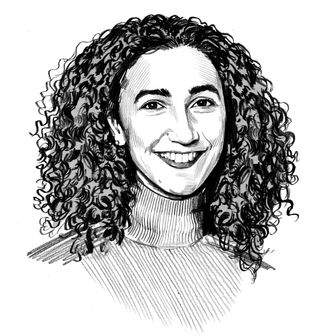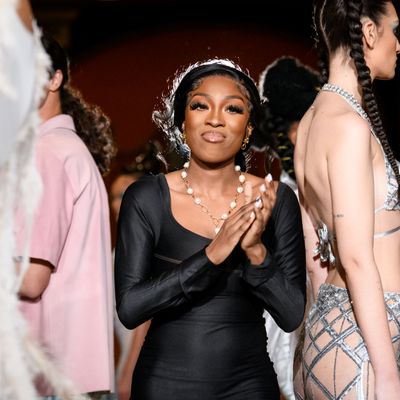
The last time I spoke with fashion designer Tia Adeola, it was the cursed year of 2020 and she was busy making hundreds of face masks in Nigeria, where she’s originally from. Stuck there during lockdown, she decided to stay busy, and her signature ruffled, Renaissance-inspired accessories ended up helping to carry her business through an otherwise difficult time. She’s back in New York now, though, and with a bang. On Thursday, the 24-year-old opened New York Fashion Week with a full collection — none of which included face masks. It was Adeola’s first show since her debut in February 2020 and her biggest since launching her label (formerly known as Slashed by Tia) from her dorm room at the New School, where she graduated in 2019. We caught up with her afterward about what the experience was like and where she’s headed.
Last time we spoke it was about your ruffled face masks. Did they help bolster your business during the pandemic?
This was during the peak of COVID. I was actually stuck in Lagos. The government closed the airports for about five months. I spent the first month just being depressed because, you know, I was in Lagos, away from my studio, away from my products. E-commerce wasn’t possible because the post office in Lagos was closed. It was just a disaster. When the restrictions started to ease up, and the post offices started opening back up, I made one sample of a face mask, and my audience on Instagram loved it. Luckily, I was able to find some people in Lagos to produce them, and I was actually shipping them from Lagos to the U.S. It definitely helped and sort of carried me through the pandemic. There was a point when the pandemic was really bad that we were selling like 200 a week.
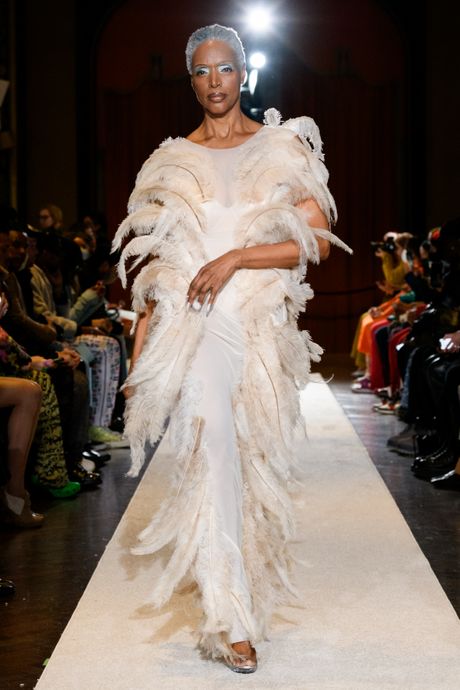
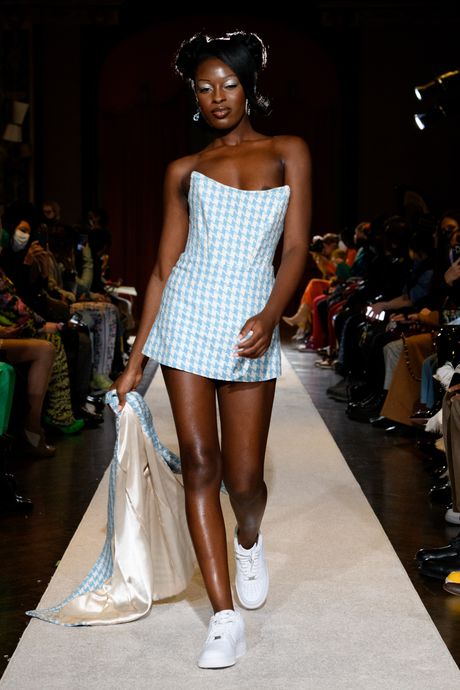
Wow, that’s a lot! When did you start designing the collection that you showed yesterday? What inspired it?
I started designing it in July for the purposes of September, but when I decided I wasn’t going to show last season, I doubled the collection. I was able to sit and think about my personal experiences; things going on in the world. There was an uprising in my country where the police were killing, kidnapping, and harassing the youth, and it was something I was very active in. So I use graphics for the first time, and you see little jabs at the police, like, “You were supposed to protect us.”
The Renaissance has also always been the foundation of my inspiration, so even beyond the apparel, like the hair and makeup and the cast — we had a harpist playing when people were walking in — I just wanted my audience to really immerse themselves in that sort of Black Renaissance narrative that I continue to push.
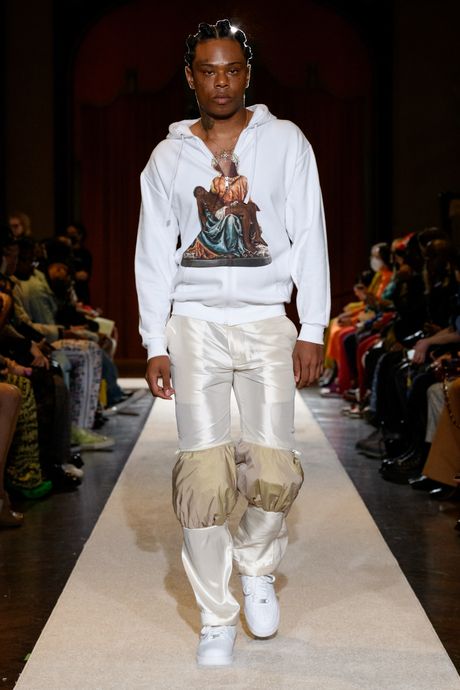
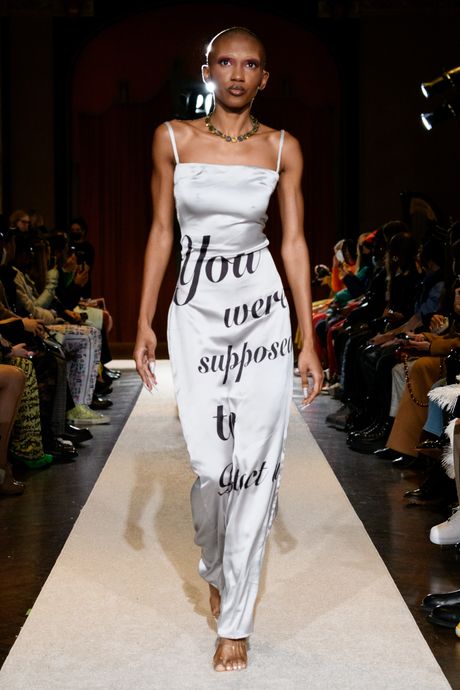
In your show notes you wrote about how you were silenced after speaking up about what was happening in Nigeria. Did you feel nervous at all about putting that message out there with your collection?
I don’t feel nervous because I’m not going on the internet and saying anything or spreading information. I’m literally just, you know, speaking through my craft, and that’s something that no one can tell me not to do.
We can talk about the clothes in a second, but the hair and makeup were so striking. What was the inspiration?
I worked with T. Cooper with Major Face and Supreme Hair specifically. They did the hair and makeup at my first-ever show, and it’s nice to have teams that have been there and get the vision. They’re also an all-Black team, so they understand structural braids and all that good stuff. I just really wanted to emphasize Black culture and art through the models’ hair. For me, they were almost like sculptures. The makeup was inspired by Fela Kuti, whose music I used on the runway. He had like 25 wives, I think, and they all performed with him, and he called them his “Kalakuta Queens.” They have that same thin brow and lined lip look going on, and that was my inspiration.
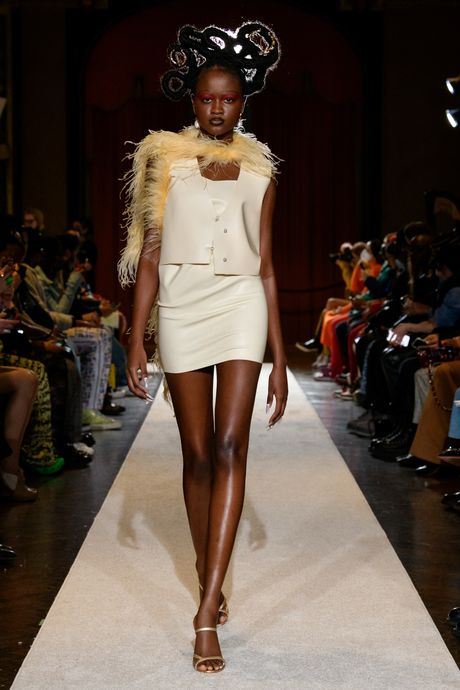
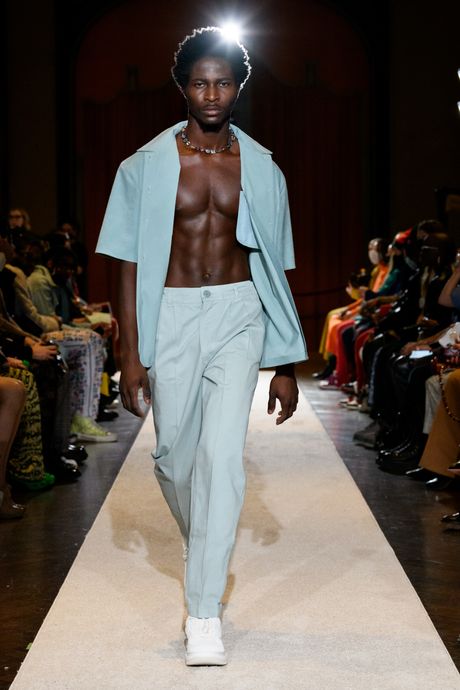
The casting was also great — can you tell me more about what you were going for?
I used to just be like, “Yeah, it’s a women’s luxury brand,” but I very quickly realized that my audience goes way beyond that. And so for me it was really important to represent everyone. We had a pregnant woman, we had twins, we had an older model. Diversity is and has always been really important to me, and the casting director was great and completely understood what I was going for.
Bonus question. Are there any highlights from the collection that you’d like to call out?
For the men I used 100 percent raw silk. At the fitting, one of the guys put the shirt on, and he was like, “Damn, I feel good in this.” And I was like, “Yes, we are done.”
This interview has been edited and condensed.


